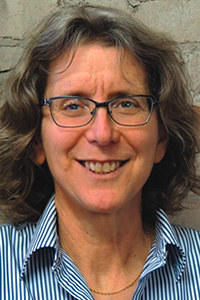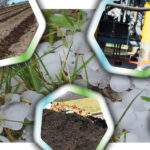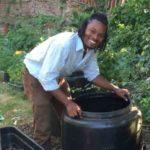
Nora Goldstein
BioCycle November/December 2018
Ten years ago, BioCycle, along with the Grass Roots Recycling Network and Eco-Cycle, launched COOL 2012, Compostable Organics Out of Landfill by 2012. The idea for COOL 2012 was hatched in the summer of 2007; a five-year window to work towards the COOL end goal seemed appropriate, thus the year 2012 was selected. This national initiative was created to inspire and educate state and local jurisdictions on the importance of getting compostable organics out of the landfill. “It is an outreach and education campaign that will provide tools, models, presentation materials and public policy suggestions to achieve the goal in communities around North America,” wrote the founders. “The COOL 2012 campaign offers communities a pragmatic and effective approach to ‘turning a climate problem into a soil solution.’”
The COOL 2012 campaign had four key Action Steps to get compostable organics out of the landfill by 2012:
Seize the Paper: Commit to recycling a minimum of 75 percent of all paper by 2012. Paper is the largest source of biodegradable materials in a landfill, so recycling and composting paper products will take the largest bite out of a community’s methane emissions.
Source Separate: Require source separation of residential and business waste into three streams: compostables, recyclables and residuals. Source separation is the key to maximizing the environmental and economic potential of these resources.
Feed Local Soils: Support local farmers and sustainable food production with community composting infrastructure. The benefits of amending soils with composted organics are well proven to reduce irrigation needs and use of synthetic fertilizers.
Stop Creating Methane Now: No matter how the waste industry promotes its “new and improved” landfills, there is only one proven way to truly prevent methane emissions — keep organics out of landfills. Public policy needs to first support the elimination of methane by requiring source separation of compostables and recyclables.
Have we made progress on implementing these Action Steps? Are these still the key steps to take going forward? Since 2008, 5 states have implemented organic waste bans and recycling laws to move the COOL needle, as have 6 local government agencies. The “seizing paper” step has been complicated recently with China’s refusal to import recycled mixed paper from the U.S. The national dialogue in terms of landfill methane emissions has been more focused on food waste disposal versus paper, which helped to drive the 5 states and 6 local agencies to implement bans and laws that include food waste. Adoption of source separation programs that includes separated organics has been steady but slow.
Which brings us to feeding local soils with compost. Over the past 10 years, a national emphasis on healthy soil has emerged, which at face value, sounds like a match made in heaven for compost. However, most of the healthy soil initiatives advocate use of no till agriculture and cover crops — both extremely important tools to improve soil health. Compost and other recycled organics products are left out of this toolbox for the most part.
But also left out are the interconnected benefits that composting and compost utilization bring to the table: Landfill methane avoidance; Moisture retention and increased infiltration of storm water; Reduction in chemical fertilizer and pesticide use; Slow release nutrients; Disease suppression; Etcetera!
As clearly stated in last month’s Editorial, “The Final Warning,” we can’t spend the next 10 years gradually implementing Action Steps that we know will draw down carbon emissions. We need KOOL Now — Keep Organics Out of Landfill — and all the benefits associated with turning a climate problem into a soil solution.









